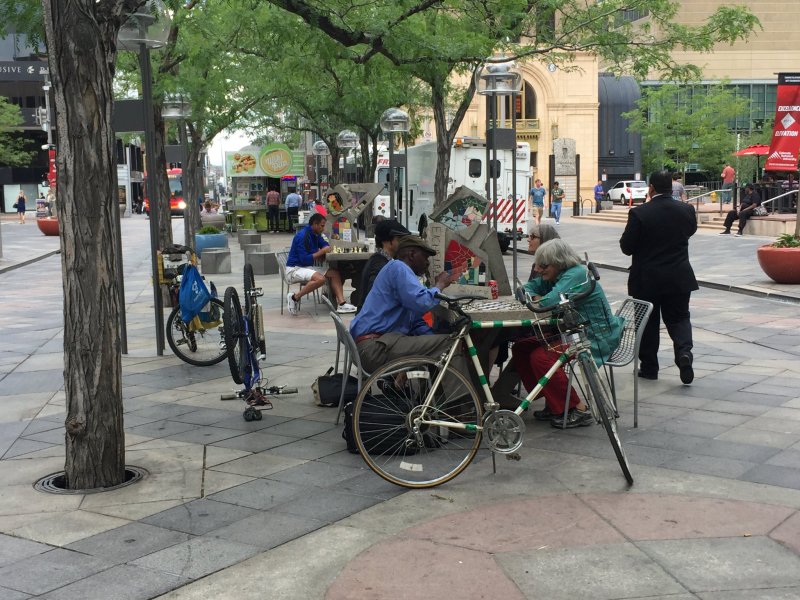No More Studies — Denver’s Finally Going to Make Decisions About the 16th Street Mall

When it opened in 1982, the 16th Street Mall didn’t really resemble the transitway and pedestrian street we know today. There were fewer people, fewer buses, and just not as much going on.
As Denver grows, the mall has to change along with the city. Though many people use the mall, few treat it as a public space where they want to spend time, especially after work hours, one study found.
How can the mall become a better place for people to walk, shop, and linger, while still serving the 45,000 daily bus passengers who ride the transitway?
Denver has been trying to figure out what to do for nearly a decade. Now some concrete decisions seem to be on the horizon. Yesterday, reps from Denver Community Planning and Development, RTD, Denver Urban Renewal Authority, the Downtown Denver Partnership, and the Downtown Denver Business Improvement District said the time for studies is over. They are going to finalize a plan for the mall. They swear.
“This isn’t starting from scratch,” said DDP President and CEO Tami Door. “We have done countless plans, there’s no question, and each of those have helped us evolve.”
There’s some time pressure to spend the $68 million allocated for the rehabilitation and transformation of the 1.2-mile strip. Because federal money is involved in the transitway, there’s a 2022 deadline to complete the mall project (the money must be spent by then, even if the project isn’t technically done).
“This is the most complex urban design and planning riddle I’ve ever seen, which is what’s so fascinating about it and what’s so challenging about it,” said CPD Director Brad Buchanan.
What might the big changes be? It sounds like the option of moving the shuttles to 15th and 17th streets is a non-starter (though technically still on the table).

Proponents of that configuration argued that the mall would be a better public space if it belongs entirely to people. Transit service could be provided in busways on 15th and 17th instead, they said, which would bring more foot traffic to adjacent streets that are comparatively sparse with activity.
Even though a summer’s worth of experiments found that more people walked and biked the mall without the buses on it, research indicates that making it permanent “won’t work” for the transit system, Buchanan said.
The leading configuration seems to be this one: Get rid of the thin center pedestrian strip, so buses operate right in the middle, and sidewalks on both sides of the street can be widened (see the image above). Right now people walk, chill, play chess, eat, and play public pianos in the central space, but it is a bit cramped.
Count RTD General Manager Dave Genova a fan of keeping the shuttles on the mall. He doesn’t want to separate bus riders with impaired sight or mobility challenges from the center of the action, he said.
“Two-way shuttle service on the mall means everything to RTD,” Genova said. “It’s really the backbone of the RTD public transit service plan, as everything that comes into downtown feeds into the 16th Street Mall.”
Technically the new plan doesn’t have to be done until 2020, but we can expect a clearer picture by the end of the year.


